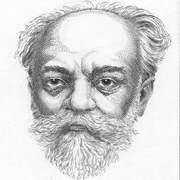Jonathan Del Mar, editor of the nine Beethoven symphonies, has now turned his attentions to Czech music. His edition of Antonín Dvořák’s Cello Concerto in B minor combines the advantages of a completely authoritative Urtext edition with all the practical requirements of soloist and orchestra.
The Dvořák Cello Concerto is, without doubt, the king of all cello concertos. Yet it has suffered an unfortunate history, no single score coming even close to Dvořák’s final intentions. First published by Simrock in 1896, it appeared in print in such a way that a live performance would, actually, represent very nearly what Dvořák wanted: the soloist plays from the excellent solo cello part, complete with Dvořák’s latest revisions; the orchestra plays from its own individual parts which were correct in most respects of importance; and the conductor directs without worrying too much when what he hears, especially from the soloist, is not the same as what he sees in his score. Evidently, Dvořák signed off this glorious piece in this state, playable as long as no one interferes too much.
But come the enlightened age of the critical edition, and a predictable but tragic confusion ensues: the well-intentioned editor examines Dvořák’s original autograph store, compares it with the Simrock edition, and finds (a) solo cello part broadly in agreement between the two (though Simrock clearly contains some valid revisions), and (b) the orchestral parts also without serious discrepancy, though again some inconsistencies have to be resolved. And all the time, Dvořák’s final, and very extensive, revisions to the solo cello part, only found in the printed solo cello copy, are left in limbo without further thought or attention. This hybrid score, with orchestral parts broadly correct but the solo part very much not, has sadly become the norm ever since the Czech Supraphon (Artia) edition was published in 1955.
Small wonder, then, that cellists have sought their own solutions to the manifestly unsatisfactory part printed in all scores, either by listening to great masters such as Feuermann or Casals (who of course learnt the solo part from the correct first edition solo part!), or by inventing ad hoc phrasing to suit their own styles of playing.
We have, for the first time, married up those specific sources that represent Dvořák’s final intentions, resulting in a true “Fassung letzter Hand” for both orchestral and solo parts, so that (at last!) the piece works exactly as printed and as Dvořák intended. Long-standing controversies may thus be solved, such as the problem, just 24 bars before the end (5 before fig. 15), of whether the first violins play D or D# – for indeed, Dvořák himself clearly wavered between the two. But if we take the last source for each instrument, we find that he solved it by introducing, just before publication, a new version of the solo part (the rhythm of the last two notes is changed) which at last works perfectly with the D# in the violins that he wanted, but which did not work together with the solo part as it previously stood.
Then there has long been doubt as to exactly what Dvořák meant by the two harmonics at the end of the slow movement. But again, all we have to do is consult the (hitherto ignored) first edition solo part, and the solution is there in every precise and unambiguous detail including fingering for each note.
Perhaps the worst problem for soloists, however, is the unsatisfactory passage in the first movement, immediately before the recapitulation (bars 257-260, the four bars before fig. 12), where the notes Dvořák wrote are notoriously uncomfortable and unidiomatic cello writing. Here there is, in a sense, nothing to be done; this is the only authentic text, and no other urtext reading is possible. But we can at least advise cellists and conductors of the solution that they are likely to meet in practice, even if it was invented long after Dvořák’s death and can therefore only be given in a footnote.
Our new edition therefore fulfils both functions; as a responsible and accurate Urtext Edition that gives Dvořák’s final text free from intervention, and as a performing edition that gives the practising musician all the information he needs in order to make the piece work in performance today.
Jonathan Del Mar
from [t]akte 2/2011



